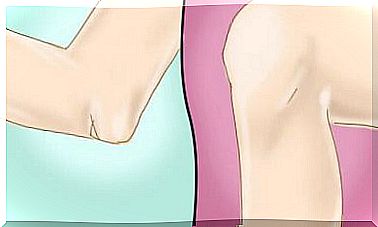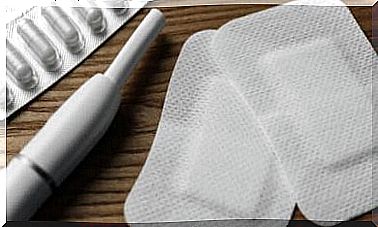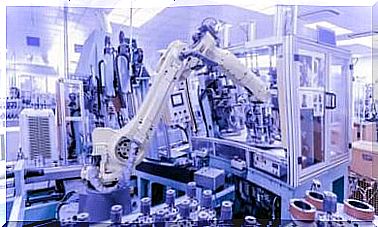Atropine: Functions And Side Effects

Atropine is a muscarinic antagonist of natural origin and with a cholinergic effect. It has mydriatic, intestinal and urinary antispasmodic, antidiarrheal, anticatarrhal and anesthetic properties.
The active ingredient is extracted from the nightshade plant and other plants belonging to the nightshade family. It is an alkaloid, a product of the secondary metabolism of these plants. As we anticipated, it provides a wide variety of effects.
In ancient times, Hindus were familiar with belladonna-based preparations and used them for many centuries. Later, during the Roman Empire and the Middle Ages, these plants were exploited to make poisons.
In this article we tell you everything you need to know about atropine:
- Mechanism of action
- Pharmacokinetics
- Pharmacological actions
- Adverse reactions.
Before delving into the properties of this drug, it will be good to understand what cholinergic receptors are. This will help us better understand its mechanisms of action and the reactions it triggers.
The cholinergic receptors

Cholinergic receptors comprise two subgroups, muscarinics and nicotinics. They are found in the synaptic cleft, most of them at the postganglionic level, although there are also some at the presynaptic level.
The presence of receptors at the latter level is common in all neurotransmission systems. This is explained because they have a necessary role in modulating the amount of acetylcholine to be released. In short, presynaptic activation of cholinergic receptors inhibits the secretion of acetylcholine.
Acetylcholine is a substance synthesized in the cytoplasm of neurons. Activates cholinergic receptors directly. It must be said that there are also presynaptic receptors that activate the production of this substance, but they are few.
Mechanism of action of atropine
Atropine is a competitive cholinergic acetylcholine receptor antagonist. As we have already said, acetylcholine is a substance that directly activates these receptors.
It suppresses the parasympathetic system, that is, it is a parasympatholytic. This is explained by the fact that cholinergic receptors are found in parasympathetic effector tissues. So, if atropine is administered, we will observe its effects in the heart, eyes and digestive tract, among other organs.
Pharmacokinetics

This drug can be administered orally, intravenously, subcutaneously, intramuscularly, intraosseously and endotracheally. In the case of oral administration, it is easily absorbed in the digestive tract and then distributed through the blood.
It is a high fat solubility drug, so it is able to cross the blood-brain barrier and the placenta. Pregnant women, therefore, need to pay special attention.
It has a half life of about 2-3 hours. It is also metabolized by the liver between 50 and 75%. Thereafter, both the metabolites and the non-metabolised drug fraction will be eliminated in the urine.
Pharmacological effects
The pharmacological action consists in blocking the muscarinic receptors which, as we have said, are a type of cholinergic receptor. By binding to these receptors, atropine prevents acetylcholine from interacting with them.
This blockage occurs gradually in a series of structures in our body. For example, in the salivary, bronchial, gastric and sweat glands, in the vascular smooth muscle, in the cardiac, digestive and urinary tract, in the vegetative ganglia.
Being a cholinergic antagonist, it triggers a series of effects in different parts of the body:
Tachycardia. Atropine is used to increase heart rate in emergency maneuvers.
On the digestive level. It decreases the tone, the spasms, the peristalsis, the colic and the gastrointestinal secretions.
It hinders urination. A problematic effect in patients suffering from benign prostatic hypertrophy.
Mydriasis. It blocks the ciliary muscle, producing a spasm by accumulation. However, blocking of muscarinic receptors in the eye does not occur with oral administration.
Side effects of atropine
Adverse effects of this drug are related to the doses administered. They are common, especially in children. In addition, atropine may accumulate and produce systemic effects in the elderly after multiple inhalation doses.
In adults, the most frequent side effects are:
- Dry mouth
- Red and hot skin due to lack of sweating.
- Temperature.
- Constipation.









